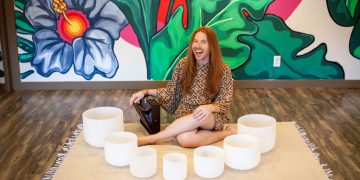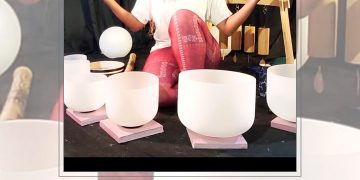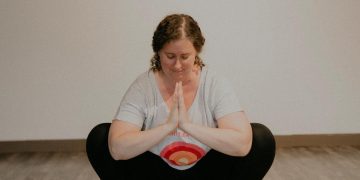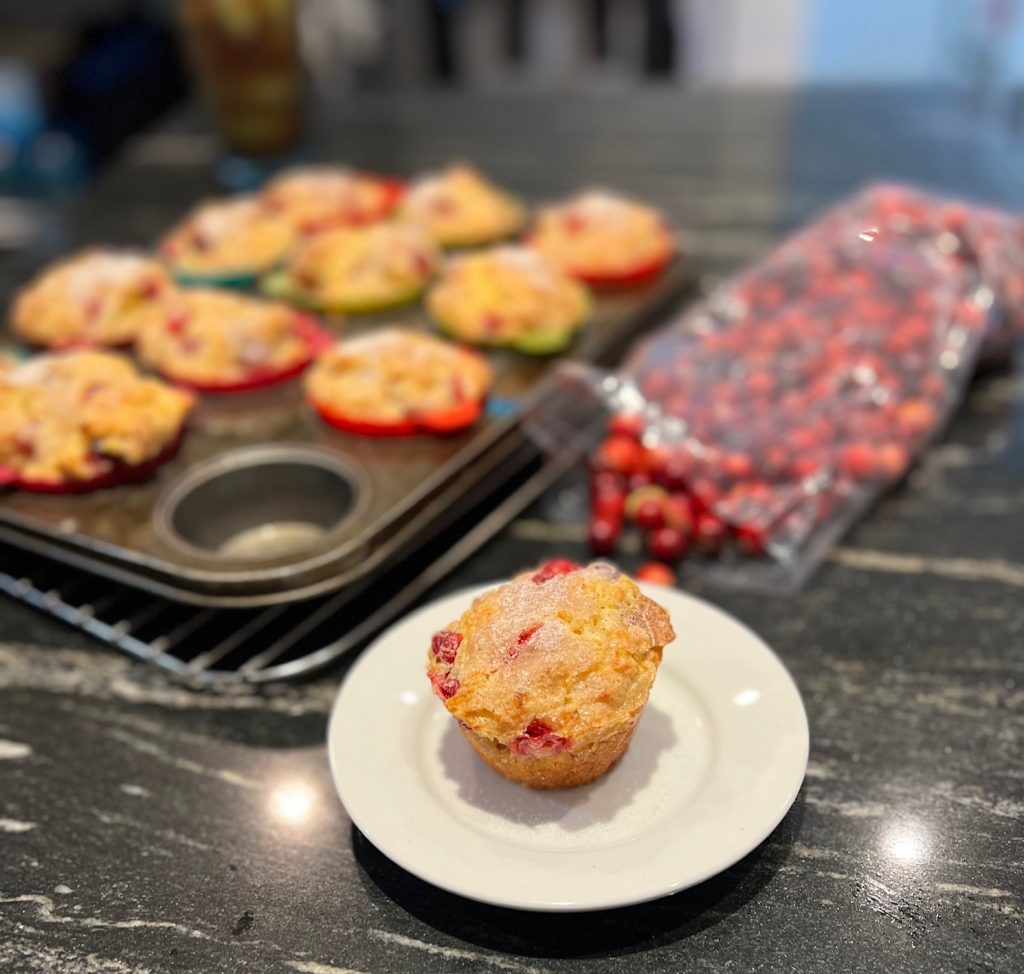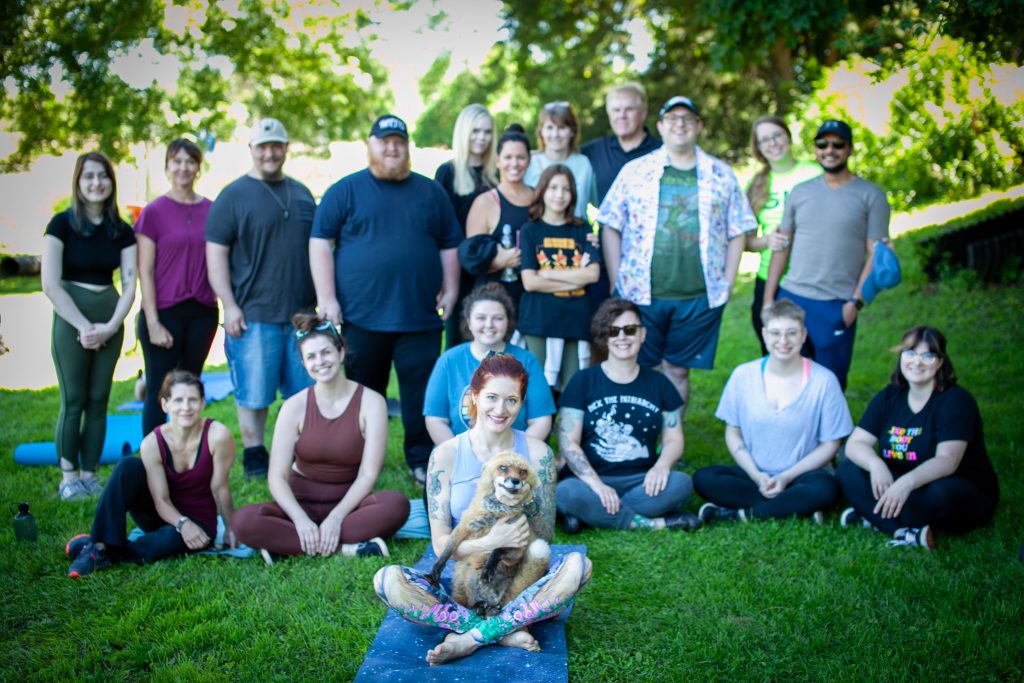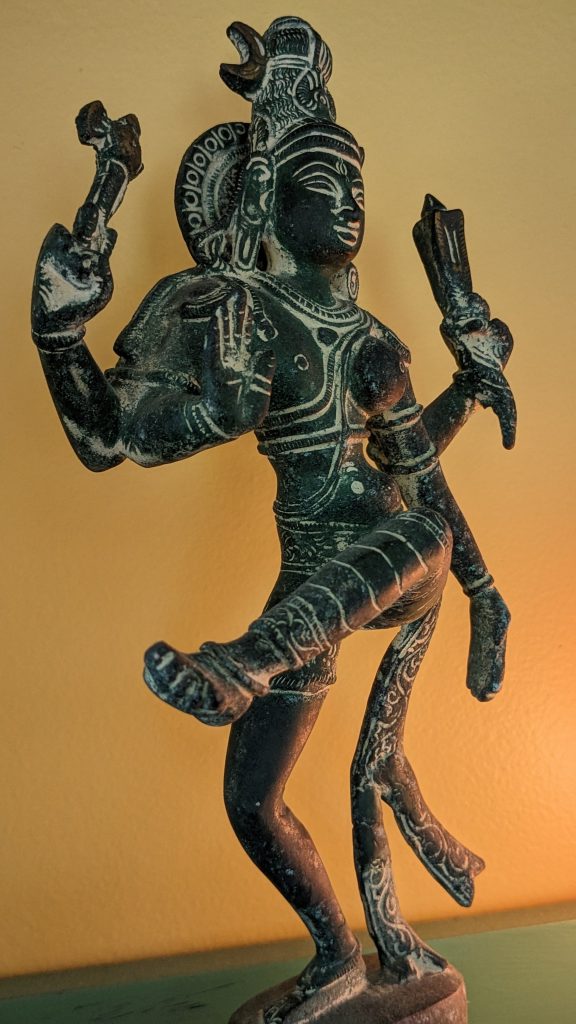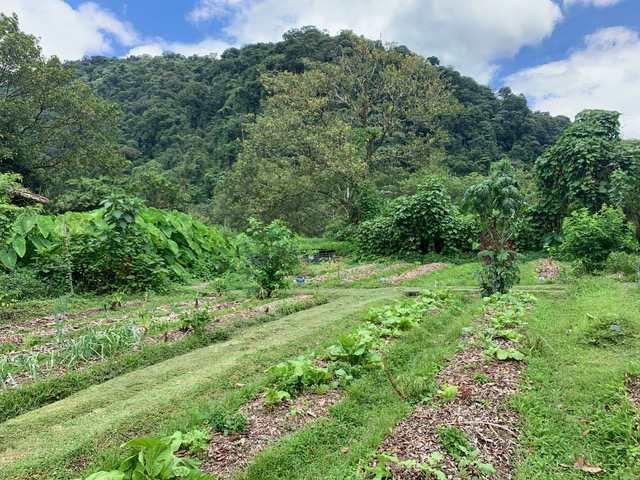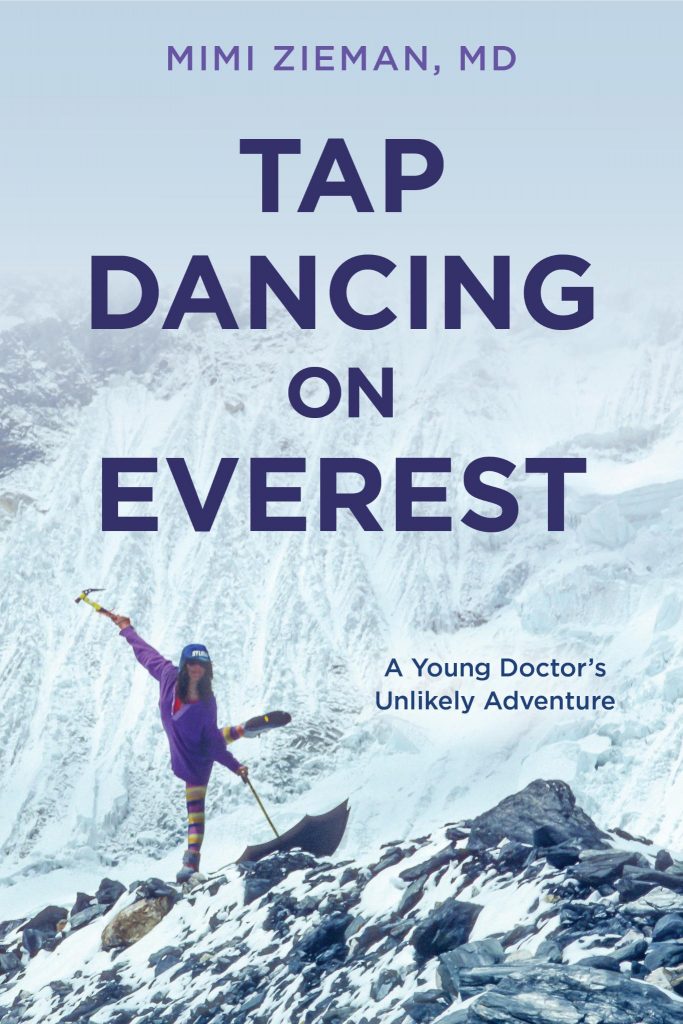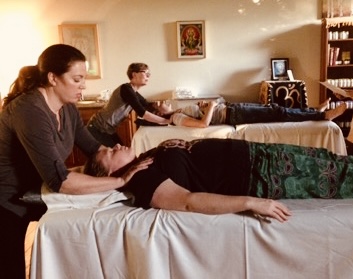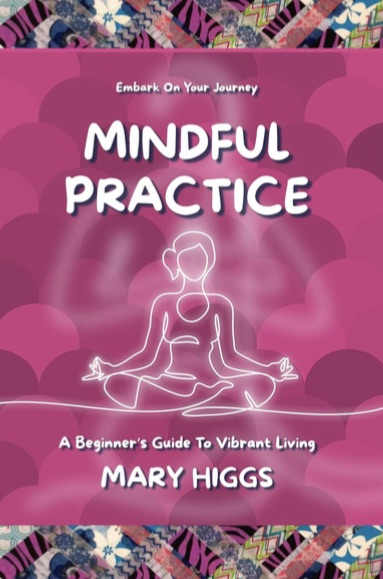We may know hundreds of āsanas, tens of kramas (sequences), variations of poses from various lineages, and the usage of ample props for practice, but if we lack a clear vision and purpose for why and what we practice – as well as how to gauge progress – we miss the point. We are missing yoga in yoga.
Every yoga practice could be precisely tailored to the needs of your body, mind, and emotions in any moment. One might envision wearable AI tech that curates the perfect yoga experience. In fact, the solution is much more affordable and elegantly fine-tuned — Āyurvedic Intelligence. When we learn to listen, assess, and respond to the body, our practice becomes a dialogue instead of a monologue. Are you willing to listen?
The body has a language. It speaks through change in felt temperature, sensations, and our breathing rhythm. It speaks through taste in the palate, the waves, the ebb and flow of breath and emotions. When we ignore the conversation of the body, we become reactive instead of responsive. We fall prey to robotic patterns, committing what Āyurveda calls prajñāparādha, crimes of intelligence — i.e., we know something isn’t right for us (think finishing off a big bar of chocolate in one sitting), but we do it anyway. Unabated, this can lead to imbalance and eventually to dis-ease.
When we listen, however, the practice becomes a dialogue. That dialogue leads to harmony, and that is the core, the essence of Āyurveda. That foundation leads us to the state of awareness that is yoga. Simply put, yoga (practice) is incomplete without Āyurveda.
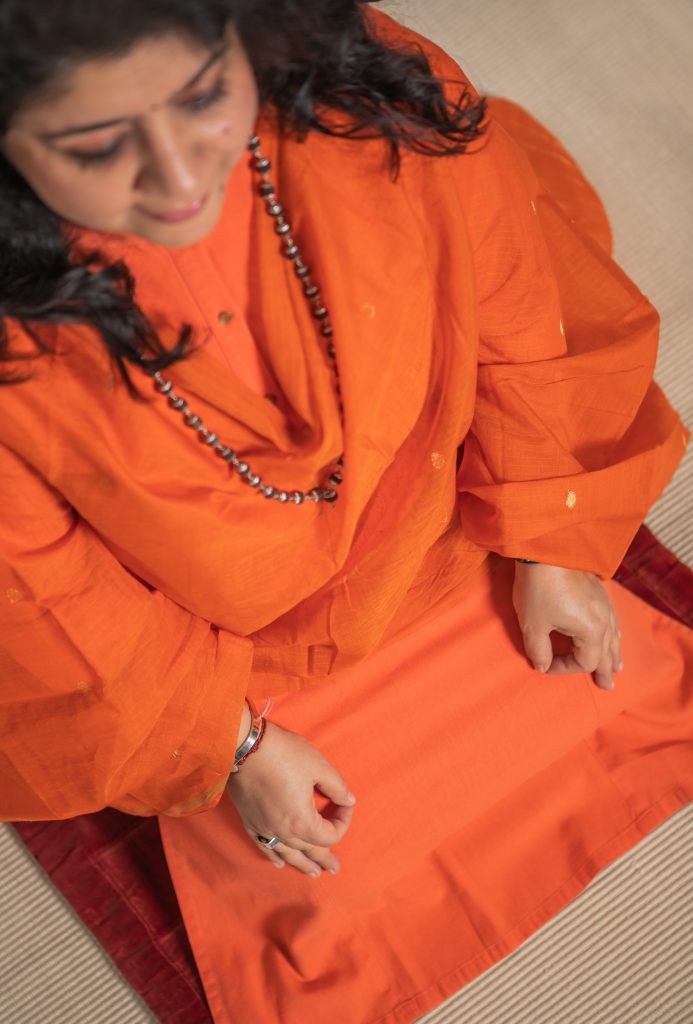
Three Ways to Incorporate Āyurveda into Your Yoga Practice
1) Ask: ‘Why am I practicing yoga today?’ Take a moment to scan and feel the body from head-to-toe, the tissues from inside-out, and the internal organs. Take mental notes of any sensations: pleasant or unpleasant, desirable or undesirable, comforting or discomforting. It’s an important query for any sincere practitioner. It brings us back to the self, activating our interoception — the ability to be in touch with our heartbeat, breathing, sensation of warmth or coolness, restfulness or restlessness, hunger or satiety, etc. In yoga, this modern concept is called building awareness, or atma-vichāra. In Āyurveda, this is the first step towards svāsthya (health). This leads to discerning intelligence that guides us towards a practice leading to doṣa (body-mind constitution) balance.
2) Listen: Body’s language of the guṇas: Āyurveda can help further define our sensations through the 10 pairs of opposites called guṇas (qualities). Think hot-cold, slow-fast, heavy-light, dry-oily, dull-sharp, mobile-static, rough-smooth, etc. We can think of the guṇas as seeds of doṣas. When guṇas increase — keep piling up — that leads to doṣa imbalance and eventually can appear as symptoms.
We can bring balance to a doṣa through its opposite. For example, if one feels cold, dry, restless, and overwhelmed (all related to vāta doṣa imbalance), choose a slow-paced practice of surya namaskāra for building warmth, joint-rotation practices (apāna kriyas) for lubrication, ṣavāsana for grounding, and meditation for calmness. Learn more about guṇas in the book Yoga: Ancient Heritage, Tomorrow’s Vision. Note: You may now be curious about pitta doṣa and kapha doṣa. This is good! This curiosity is important. It’s easy to become compliant and robotic in practice, and such listening not only helps us get in touch with the body at a deeper level but also gives guidance on how to really curate a yoga practice for self or others.
3) Assess: The Breath: How many times have you wondered which prāṇāyama to practice? Start by observing the breath: Is your inhalation longer or shorter, warmer or cooler, heavier or lighter than the exhalation? What else do you notice? Perhaps you sense your breath is irregular and feels rough. As per Yoga Sutras, breath is not only an indicator of the state of the mind but also a tool to bring evenness to it (Yoga Sutras 1.34).
Rough, shallow, fast-paced, irregular, short, choppy, impatient, hot, or voiced breath signify mental rajas (movement). To balance the rajas, practice nāḍī shodhana with sama vritti (equal ratio): one-is-to-one ratio. Inhale three counts, exhale three counts or four/four or five/five, based on your capacity. You are simply ironing out the breath.
Heavy, effortful, dull breath signifies mental tamas (inertia). To balance this guṇa, practice nāḍī shodhana with vi–sama vritti (unequal ratio) using the ratio one-is-to-two or two-is-to-one. This uneven ratio nudges the mind to leave the inertia. To learn more on symptoms and remedies in the book, check out SOMA: 100 Heritage Recipes for Self-Care.
Remember that Āsana is just the “a” of yoga. Be sure to incorporate the subtle tools — Mantra, Mudra, and Meditation — into your practice to connect with the heart of yoga. These practices work at a deeper level on samskaras (subtle impressions of desires), vikalpas (negative thought constructs), and vrittis (modifications of body, breath, and mind). Freedom from these three is eventually the real promise of yoga. But it cannot be fulfilled without the Āyurvedic lens. Let us make sure we practice yoga in the light of Āyurveda. See the book, Mudrā: The Sacred Secret to learn how to put mudrās into practice.
Even with this morsel of Āyurvedic understanding, we reap so many benefits in a day and in a lifetime. It’s not necessary for everyone to plumb the full depths of Āyurveda, but a solid foundation can literally change lives. (Keep an eye out for my annual Essential Āyurveda Training.) Āyurveda is the language of yoga, and yoga is the way to live a life worth awakening. So, what is your body telling you right now? Now is the best time to listen!
Indu Arora is the author of Mudra: The Sacred Secret, Yoga: Ancient Heritage, Tomorrow’s Vision, and SOMA: 100 Heritage Recipes for Self-Care. She considers herself a student for a lifetime. As a yoga and Ayurveda teacher, she shares her experiences from the last twenty-five years through trainings and speaking engagements. Her unique gift is in making yoga and Ayurveda a practice, equally useful for a beginner as for a sincere seeker. She lives in Minneapolis with her spouse.
Download the current issue of the magazine HERE.


